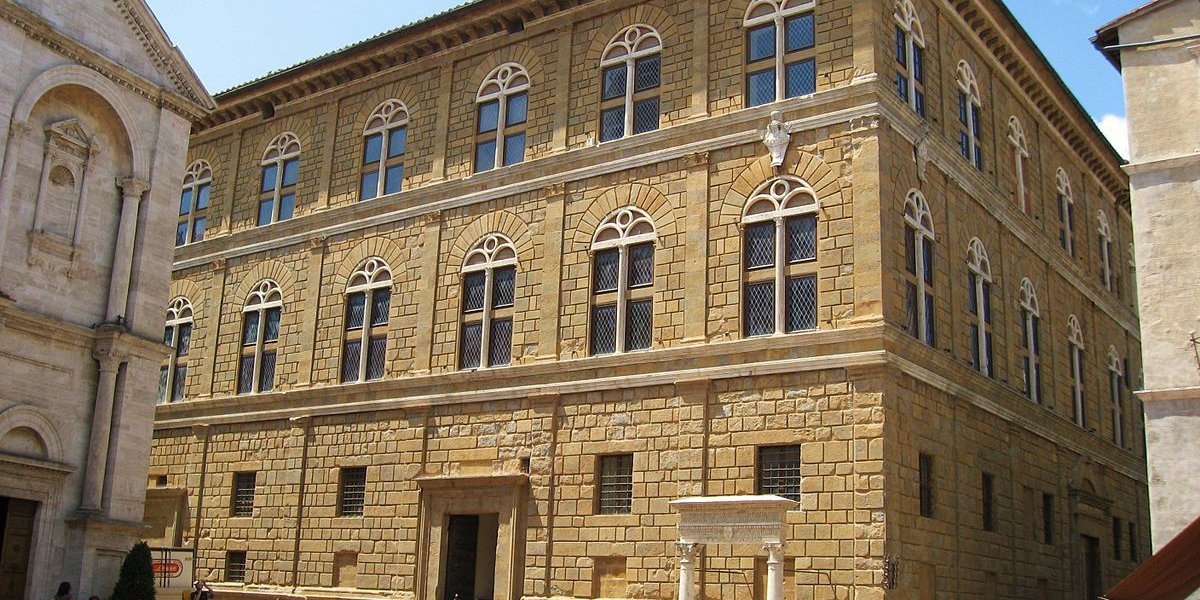
The Palace of Pious II
“If the value and grace of the house is above all (as some think) the light, certainly no house will ever take precedence over this one that has an unobstructed view towards the four cardinal points and receives light not only from the external windows, but also in abundance from the internal ones that overlook the large courtyard in the centre of the building, illuminating even the lowest and most hidden warehouses.
The view of the observer from the highest rooms to the west extends beyond Montalcino and Siena to the Pistoia Alps. The gaze of those looking out to the north is afforded a view of extensive hills and the enchanting green of the woods that stretch for five miles.
If you look more carefully, you can see the Apennines and Cortona, located on a high hill not far from Lake Trasimeno. But the valley of the Chiana river, which lies in the middle, remains hidden because it is too low. The view to the east is less extensive, reaching as far as Montepulciano, controlled by Florence, which lives in perpetual fear of Siena, reaching the mountains that divide the Chiana region from the Val d'Orcia.
The three orders of arcades that receive the sun from midday, as we have said, afford views as far as Monte Amiata, very high and cloaked in woods, and below this the Orcia valley and the verdant meadows, the grassy hills in the good seasons, fields full of crops, vineyards; you can see the fortresses and castles on the steep cliffs, the Vignoni baths and Monte Pesio (Cetona), higher than Radicofani and which is the point from which the winter sun rises.”
Pious II, The Commentaries